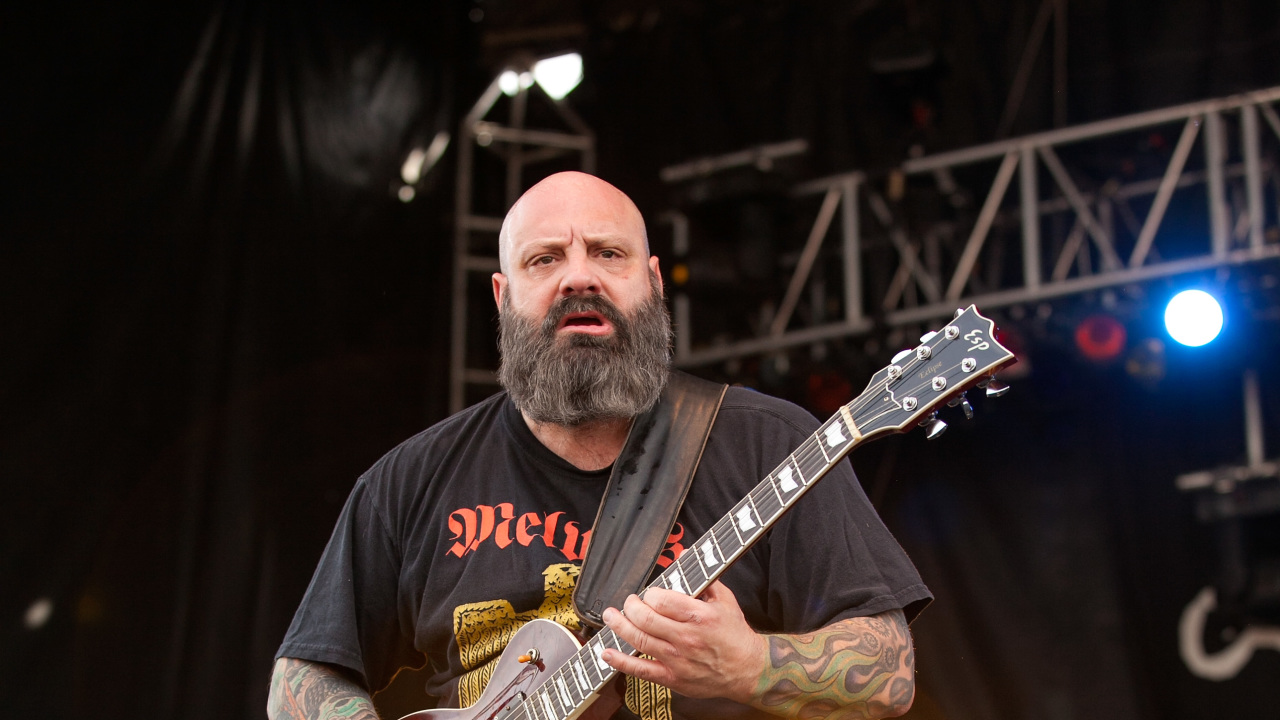Crowbar: Bleeding For Metal
In 2005, the New Orleans sludge masters were helping to spearhead a metal revival. Metal Hammer found out more about their love of Sabbath and the Down connection

At this time of year, the stench on the streets of New Orleans is fucking unbearable. At the end of February, Mardi Gras – the ultimate legal expression of hedonism, decadence and debauchery – rocked through The Big Easy, and the locals are still clearing the debris from the streets. Across the Atlantic in dear old Blighty, thousands of miles away from the sub- tropical heat of the burgeoning swamp city and its ties to voodoo,vice and vampires,the sprawling urban expanse of Birmingham is getting a make-over. The post-industrial landscape of the West Midlands is undergoing a face-lift to bring it in line with its more cosmopolitan European counterpart cities.
On the surface, these two renowned areas couldn’t be more different. Yet, if you peer between the cracks you’ll quickly realise that New Orleans and Birmingham share a common bond – they have both been the breeding grounds for the world’s heaviest, sludgiest doom metal bands. Birmingham, as we all know, gave us Black Sabbath – the godfathers of heavy metal. But it was the New Orleans scene that kept that legacy from being annexed to the annals of history.
Let’s look back 15 years or so to the late 80s/early 90s. Black Sabbath weren’t releasing great albums. They had Tony ‘The Cat’ Martin on vocals (he was no Ozzy Osbourne – he wasn’t even a Ronnie James Dio!) and poodle haired ex-member of Whitesnake, Neil Murray, on bass. It was almost as if they were limping around under their once proud moniker, and it was easy to see why the press had tuned out and switched off. Sad, but true.
Over in New Orleans, a young heavy metal singer by the name of Philip Anselmo was cutting his teeth with his band Pantera while his musical peers, bands like Eyehategod and Crowbar, were keeping the Sabbath dream alive by fusing the Brummie rockers’ patented brand of super heavy riffs with Black Flag’s edgy aggression and The Melvins’ spasmodic time changes. In their own individual ways, each faction of the New Orleans scene
reminded the world of why Black Sabbath were THE quintessential heavy metal band. And, ironically enough, Pantera, Eyehategod and Crowbar became the darlings of the European metal press – the very same press who were ignoring Ozzy and Sabbath – who branded the New Orleans movement ‘doomcore’.
“I found that particular moniker to be quite fitting,” grins Crowbar mainman Kirk Windstein, “and I still do today to be honest.I always feel like it’s a big pat on the back when people say that we’ve kept the Sabbath sound alive. Now Sabbath are back together and touring, I feel like saying, ‘Hey, I told you so, all those years ago, how great Black Sabbath are. Where the hell have you idiots been at?’.”
New Orleans’ ultimate tribute to Sabbath came in the form of the Down project. In 1995 Kirk Windstein (guitar) and then Crowbar bassist Todd Strange joined Phil Anselmo (vocals), Corrosion Of Conformity singer Pepper Keenan (guitar) and Eyehategod’s Jimmy Bower (drums) to record an impromptu album of Sabbath inspired material. The record, NOLA, was an instant cult classic and in 2001, the band reconvened for the second outing, Down II, and drafted in Pantera bassist Rex Brown to replace Todd Strange.
Sign up below to get the latest from Metal Hammer, plus exclusive special offers, direct to your inbox!
“We had no idea that there was so much interest in Down,” Kirk recalls. “We made a three-song demo one weekend, recorded it on four-track and then we listened back to it the next day. Man, it was totally awesome! Then the next thing we all knew it was six years later and we’re onto a second album and out on tour without our day jobs!”
By 2002 however, whilst Down hit the road as part of Ozzy Osbourne’s mammoth Ozzfest tour, it seemed the tables had turned and it was Crowbar’s turn to all but disappear from the scene.
“Last summer [Crowbar] went and did a two week tour of Germany,” continues Kirk. “We hadn’t played in Europe in like, three-and-a-half years, and we were doing it all off our own backs. I was really, really nervous and wondering if people had forgotten about Crowbar.”
Thankfully though, Crowbar’s comeback tour was really well received. The doom metal faithful came out on mass and all of the shows were sold out. Kirk even managed to air a couple of tracks from Crowbar’s awesome new album, Lifesblood For The Downtrodden, that he’d been working on with Down buddy Rex Brown.
“Between the second Down album and having a baby the band lost a lot of time,” he admits. “We stared doing Down in 2001, and after the recording and the press we went on tour for a year. So I came off the Down tour at the end of 2002 and in March of 2003 my wife gave birth. I hadn’t taken any time off in like… forever! That said, my daughter was born in March, and I started writing Lifesblood… in May!
“I sent Rex a rough demo of what we had done so far. There were no vocals, just guitars and drums. He put it on his stereo and by track four he’d turned it off and called me up and said ‘Kirk, I don’t need to hear any more of this demo, it fucking smokes! I’d love to play on it. Heck, I’d love to co-produce it!’. So we went in the studio late July 2003 and took the rest of the year off to do it.”
It’s not just Black Sabbath who are having a real resurgence of late – heavy metal itself also seems to no longer be a four-letter word. There’s a whole new crop of young American bands like Killswitch Engage, Shadows Fall, Trivium and Avenge Sevenfold, etc. flying the flag for metal. And while Lifesblood For The Downtrodden is arguably Crowbar’s greatest and most accomplished work to date, staying true to their original ethic of playing slow, downtuned riffs with vocals that make your teeth rattle, as the veritable king of US heavy music, does Kirk feel that these young whippersnappers are trying to run away with his crown?
“You know it’s always a major compliment when these young bands say they were inspired by Crowbar. And I think we were one of the first bands to down tune to B – that was kind of a Crowbar trademark – but, as ever, we’ll just keep doing our own thing. We’ll always be here. We’ll still be here even after it’s no longer cool to be in a heavy metal band again.”
This was published in Metal Hammer issue 140.
